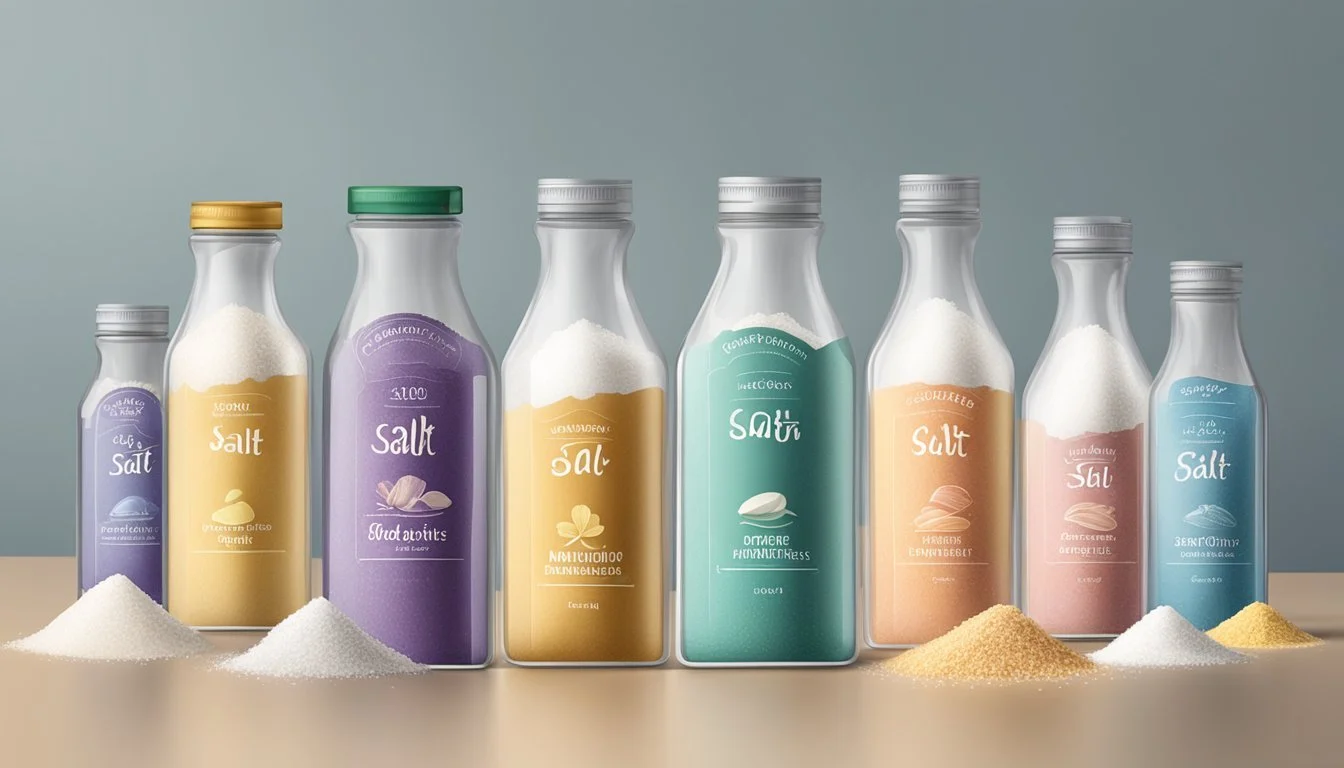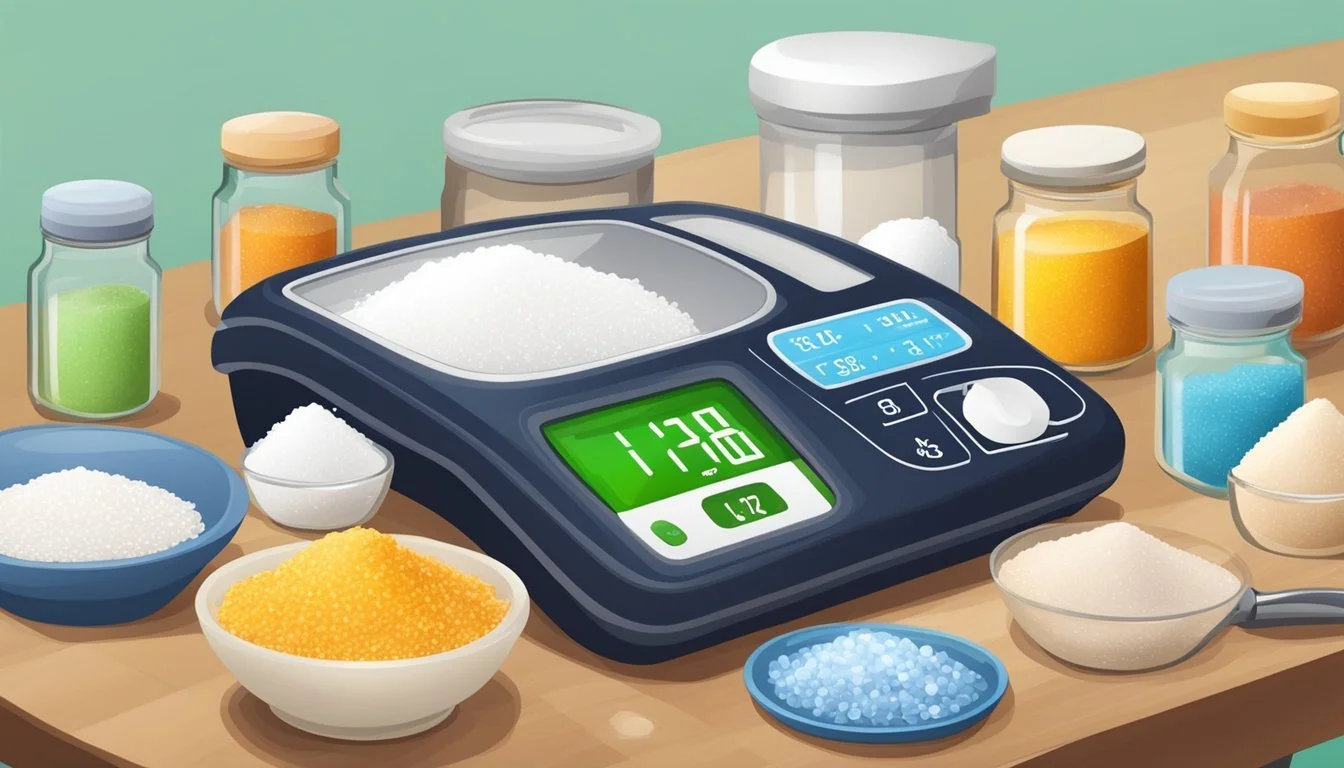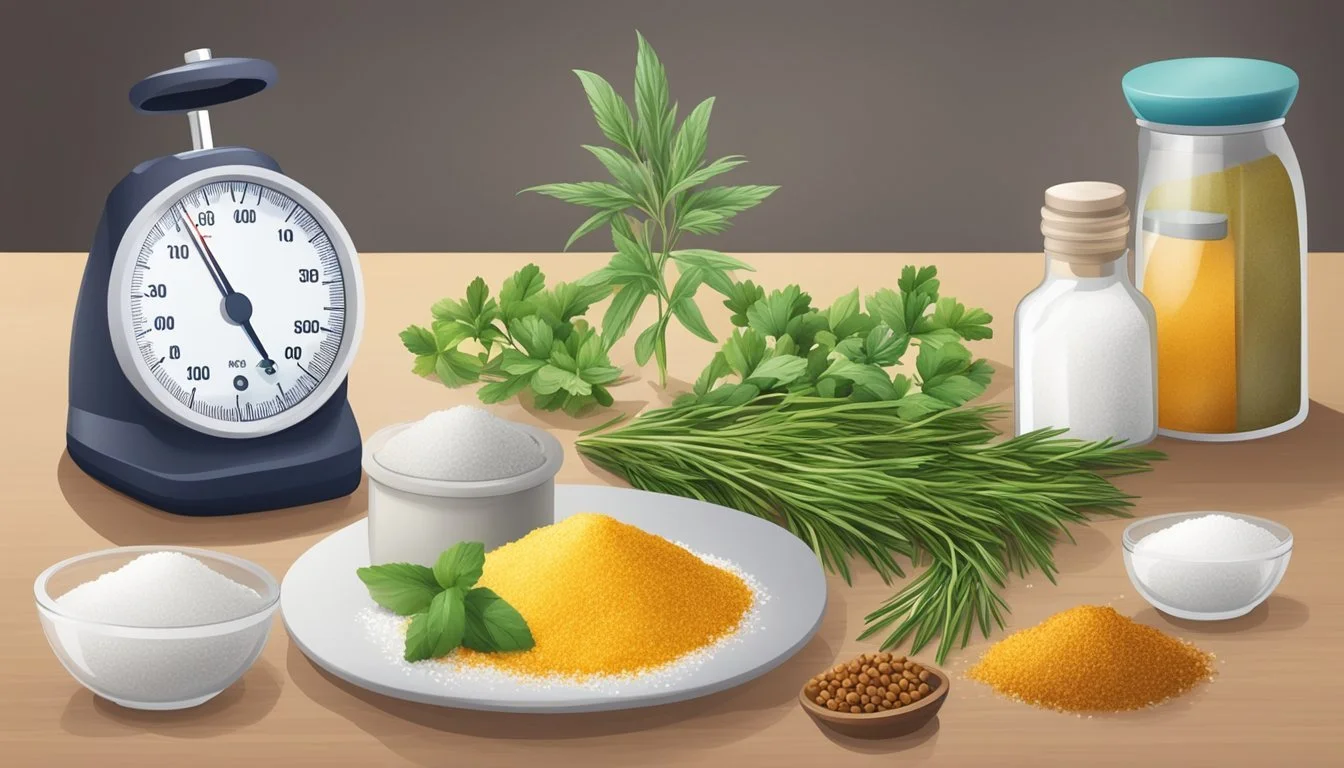Is It Safe to Use Salt Substitutes with Hypertension?
Understanding the Health Impacts
Individuals with hypertension often look for ways to manage their condition, and dietary adjustments, including the reduction of salt intake, are commonly advised. Salt, or sodium chloride, while essential for bodily functions, is typically consumed in excess, leading to higher blood pressure and increased risk of cardiovascular diseases. Salt substitutes have emerged as an alternative, with compositions designed to lower blood pressure and combat heart issues. They generally contain potassium chloride instead of sodium chloride, a shift that can have significant effects on blood pressure levels.
However, the safety of using salt substitutes is not universally applicable and must be considered on an individual basis. For those with hypertension, the use of such substitutes could potentially be beneficial by lowering blood pressure, but caution is advised. Medical professionals, including cardiologists, caution that for certain individuals, especially those with kidney issues, the increased potassium intake from salt substitutes could be harmful.
The importance of consulting a healthcare provider before using salt substitutes cannot be overstated, as they can help determine whether this approach is safe and appropriate for managing hypertension. By tailoring advice to an individual's specific health profile, including kidney function and existing medication regimen, healthcare providers can guide patients towards safe and effective dietary changes to manage high blood pressure.
Understanding Hypertension
Hypertension, commonly known as high blood pressure, is a significant health concern because it increases the risk for heart disease and stroke, two leading causes of death.
Defining High Blood Pressure
High blood pressure, clinically referred to as hypertension, occurs when the force of blood pushing against the arterial walls remains too high over time. It is typically defined as blood pressure that is consistently 130 millimeters of mercury (mm Hg) or higher for the systolic reading, or 80 mm Hg or higher for the diastolic reading.
Risks Associated with Hypertension
The complications of untreated hypertension are substantial, as it can lead to cardiovascular disease including heart attack and stroke. High blood pressure damages arteries, making them less elastic, which decreases the flow of blood and oxygen to the heart and eventually can cause the heart muscles to weaken. Additionally, hypertension contributes to the development of stroke by increasing the workload on the heart and damaging the delicate blood vessels in the brain.
The Role of Sodium in Blood Pressure
The intake of sodium, commonly obtained through salt (sodium chloride), plays a significant role in the regulation of blood pressure and cardiovascular health.
Sodium's Impact on the Cardiovascular System
Sodium is a key electrolyte in the human body, aiding in nerve function and muscle contraction. However, its most notable role is in maintaining fluid balance and blood pressure. When sodium is consumed, it draws water into the bloodstream, increasing the volume of blood. Excessive sodium intake often leads to a higher blood volume which the heart must pump, thus exerting more pressure on the artery walls. The resulting high blood pressure, or hypertension, is a risk factor for heart disease and stroke.
To gauge the impact of dietary sodium, health professionals sometimes measure urinary sodium excretion, which reflects sodium consumption. Elevated levels of urinary sodium excretion are associated with increased blood pressure.
Dietary Sodium Intake Recommendations
Major health organizations have established guidelines for sodium intake to mitigate hypertension risks. The American Heart Association recommends no more than 2,300 milligrams a day, moving toward an ideal limit of 1,500 milligrams for most adults. Adhering to the Dietary Approaches to Stop Hypertension (DASH) diet, which emphasizes fruits, vegetables, whole grains, and low-fat dairy products, can also help reduce dietary sodium and lower blood pressure.
Processed foods are a major source of sodium in the diet. It is advised that individuals with hypertension or at risk of developing hypertension carefully examine food labels to manage their sodium consumption effectively.
Potassium's Effect on Hypertension
Potassium plays a critical role in managing hypertension, a condition affecting billions globally. This section explores how potassium intake, especially through salt substitutes, can influence blood pressure levels.
Balancing Sodium with Potassium Intake
The delicate balance between sodium and potassium intake is crucial for maintaining healthy blood pressure levels. Sodium, commonly consumed as sodium chloride (table salt), can increase blood pressure when taken in high amounts. Potassium, on the other hand, may help to counteract sodium's effects on blood pressure. Salt substitutes often contain potassium chloride, which can be a beneficial alternative to regular salt for those with hypertension.
Sodium impact: Increases blood pressure by holding excess fluid in the body.
Potassium impact: Lowers blood pressure by helping the body eliminate excess sodium and relaxing blood vessel walls.
Potassium's Role in Cardiovascular Health
Potassium intake has a direct influence on cardiovascular health. Adequate levels of potassium in one's diet can help to lower high blood pressure, a leading risk factor for cardiovascular diseases. However, individuals with hypertension should be aware that a high potassium intake may not be safe for everyone, particularly those with kidney disorders or those taking certain medications.
Benefits:
Reduces blood pressure.
Lowers risk of stroke and heart disease.
Considerations:
Not recommended for individuals with impaired kidney function.
Should be balanced with other dietary minerals.
By considering both sodium reduction and increased potassium intake via salt substitutes or diet, individuals may have a practical approach to manage hypertension effectively.
Salt Substitutes and Their Composition
When managing hypertension, one common measure is reducing sodium intake. Salt substitutes are designed to provide a similar flavor to table salt while having a lower sodium content or being sodium-free. Here we explore the various types of salt substitutes and the role of potassium chloride in them.
Types of Salt Substitutes
Salt substitutes consist of various compositions. The key difference between them and regular table salt, which is primarily sodium chloride, is the reduced sodium content. Some common types of salt substitutes include:
Potassium Chloride: The most prevalent type used to replace sodium.
Potassium and Sodium Chloride Mix: A blend that reduces sodium content but maintains some table salt properties.
Magnesium Sulfate: Less commonly used, often added to other substitutes.
Herbal or Spice Blends: These contain no sodium and utilize herbs and spices for flavoring.
Iodized Options: Some salt substitutes are also fortified with iodine, similar to iodized table salt.
Understanding Potassium Chloride
Potassium chloride is often the main ingredient in salt substitutes as it mimics the taste of salt with lower sodium levels. The comparison in composition between regular table salt and potassium chloride-based substitutes is as follows:
Element Table Salt (Sodium Chloride) Potassium Chloride-Based Substitute Sodium Content High (~40% by weight) Low to None Taste Salty Salty, may have a slightly bitter aftertaste Function Flavor, preservative Flavor, can provide potassium
It's important to note that while beneficial for reducing sodium intake, an excess of potassium can be harmful for individuals with kidney issues or those on certain medications. Users are advised to consult healthcare professionals before making a switch to potassium-based salt substitutes.
Benefits and Risks of Salt Substitutes
Salt substitutes have emerged as an alternative to regular salt for individuals with hypertension, aiming to reduce sodium intake while providing a similar flavor profile. They typically contain potassium chloride and are used to lower blood pressure, but it is important to consider both the clinical evidence and potential concerns of increased potassium intake.
Clinical Evidence Supporting Salt Replacement
Randomized controlled trials have highlighted the efficacy of salt substitutes in reducing the incidence of cardiovascular events and stroke in individuals with hypertension. For example, individuals who replaced regular salt with a salt substitute saw a significant reduction in both fatal and nonfatal stroke events, suggesting a beneficial role in cardiovascular health.
Crucial Points from Studies:
Reduction in Stroke Events: Lower rates in the salt-substitute group compared to the regular-salt group.
Blood Pressure Management: Potassium-enriched salt substitutes can help manage blood pressure levels, reducing the risk of hypertension-related complications.
Potential Concerns with High Potassium Intake
While potassium is beneficial for blood pressure control, excessive intake can be harmful, especially for those with kidney disease, which impairs the body's ability to excrete potassium. This can lead to elevated blood potassium levels, posing risks for individuals with compromised kidney function or those taking certain medications.
Key Risks Include:
Hyperkalemia: Heightened levels of potassium in the blood, which can affect heart function and pose serious health risks.
Adverse Interactions: Individuals with kidney disease or on medication that affects potassium levels should exercise caution due to the risk of drug interactions and further complications.
Special Considerations in Specific Conditions
When managing hypertension with salt substitutes, individuals with underlying health issues such as kidney disease, diabetes, or liver disease must proceed with caution. The safety and impact of these substitutes can vary significantly based on one’s specific health condition.
Salt Substitutes for Individuals with Kidney Disease
Individuals with kidney disease, especially chronic kidney disease, need to be particularly careful with salt substitutes. Many of these substitutes contain potassium chloride, which can lead to elevated potassium levels in the blood (hyperkalemia), as damaged kidneys may not be able to remove potassium efficiently from the body. This can be dangerous, potentially leading to serious heart problems and other health issues.
Key Points for Patients with Kidney Disease:
Monitor potassium levels: Regular blood tests are important to avoid hyperkalemia.
Consult healthcare providers: Before using salt substitutes, one should consult with their doctor or dietitian.
Impact on Diabetes and Liver Disease
Diabetes and liver disease can both influence how the body processes certain nutrients and electrolytes. For those with diabetes, maintaining a balanced sodium and potassium level is crucial, as imbalances can affect blood sugar control and insulin sensitivity.
Liver disease further complicates the use of salt substitutes since the liver plays a role in metabolizing and processing nutrients. Individuals with liver disease may have altered processing of electrolytes like sodium and potassium.
Specific Considerations for Diabetes and Liver Disease:
Blood sugar monitoring: Patients with diabetes should watch for any changes in blood sugar levels when using salt substitutes.
Electrolyte balance: Careful management of electrolyte intake is important to avoid complications.
Medical guidance: It is essential to consult healthcare providers to tailor dietary changes to individual health needs.
Using salt substitutes can be a helpful strategy in managing high blood pressure, but patients with additional health concerns such as kidney disease, diabetes, or liver disease should adopt such dietary changes under medical supervision to ensure safety and efficacy.
Culinary Uses of Salt Substitutes
When managing hypertension, the reduction of sodium intake is crucial. Salt substitutes offer a way to season food while reducing sodium levels, essential for individuals with high blood pressure. They can be used both in cooking and baking, allowing for a lower sodium diet without compromising flavor.
Incorporating Substitutes in Cooking and Baking
In cooking, salt substitutes can be added to dishes in the same measure as traditional salt. For example, when preparing meats, vegetables, or sauces, a dash of a potassium-based salt alternative can impart the desired salinity. However, care should be taken as some substitutes, especially those high in potassium, may not be suitable for everyone and could affect the taste and texture of certain foods.
In baking, substituting salt can be more challenging due to its chemical roles in texture and leavening. A common approach is to replace no more than 20% of regular salt with a salt substitute to avoid altering the flavor profile or the physical properties of the baked product. It's crucial to note that some salt substitutes can leave a bitter aftertaste, which might be noticeable in baked goods.
For individuals with hypertension and a need for a low sodium diet, salt substitutes can be a valuable tool in their culinary arsenal, enabling them to enjoy a variety of flavors without the health risks associated with high sodium intake. Here are a few common salt substitutes used in the kitchen:
Potassium Chloride: A popular choice, often available in granulated form, suitable for both cooking and baking.
Herbs and Spices: Options like garlic powder, ground black pepper, dill, and smoked paprika can provide flavor without adding sodium.
Vinegar and Citrus Juices: Adding acidity can enhance flavors, potentially reducing the need for added salt.
When using salt substitutes, one should always follow the recommended amounts, bearing in mind that some individuals may have dietary restrictions that necessitate caution, particularly in the case of potassium-based substitutes.
Guidance from Health Organizations
Health organizations recommend cautious use of salt substitutes, especially for individuals with hypertension. They advocate for sodium reduction as a key strategy in managing high blood pressure.
American Heart Association on Salt and Substitutes
The American Heart Association (AHA) emphasizes the importance of reducing sodium intake to prevent and control hypertension. They acknowledge that while salt substitutes can be helpful, individuals on certain medications or with specific health conditions should consult their doctors before using them. Potassium-based salt substitutes are common recommendations, yet they may not be safe for everyone, particularly for those with kidney disease or those taking medications that affect potassium levels.
World Health Organization's Recommendations
The World Health Organization (WHO) regards sodium reduction as a vital public health intervention to decrease the incidence of cardiovascular diseases. The WHO recommends strategies for sodium reduction, including the use of potassium-enriched salt substitutes as a cost-effective way to manage blood pressure levels globally. The organization has also provided guidance for the adoption of these substitutes as part of broader sodium intake reduction policies. It's critical that the introduction of low-sodium salt alternatives aligns with each country's health policies and available resources.
Global Perspectives on Sodium and Health
Sodium consumption and its impact on health have become a focal point of global health policy, as hypertension remains a leading risk factor for noncommunicable diseases (NCDs) like cardiovascular diseases.
Salt Consumption Patterns in Different Countries
Different countries exhibit varying patterns in salt consumption. China and India, two of the world's most populous nations, have been documented with high sodium intake levels. As per the Global Burden of Disease Study, sodium intake in these regions significantly exceeds the recommendations suggested by health authorities, contributing to the prevalence of hypertension and related health issues.
In contrast, South Africa has implemented legislation to limit the amount of sodium in certain foods, recognizing the link between high sodium intake, hypertension, and NCDs. South Africa's proactive approach showcases the importance of regulatory measures in managing the population's sodium consumption.
Efforts to Address Noncommunicable Diseases
Globally, efforts to reduce the burden of NCDs include addressing modifiable risk factors such as unhealthy diets and high sodium intake. The World Health Organization (WHO) plays a pivotal role in these efforts by setting targets and providing guidelines for salt intake reduction. Potassium-enriched salt substitutes have been suggested as an affordable strategy to reduce blood pressure (BP) and prevent cardiovascular events, especially in places with high levels of iodine deficiency.
Moreover, the recent WHO report recommends that countries explore methods to increase the availability and use of potassium-enriched salts as part of a broader initiative to combat the global NCD epidemic.
By tailoring approaches to fit cultural and regional dietary patterns, these strategies aim at curbing the rise of hypertension and other noncommunicable diseases associated with high sodium consumption.
Conclusion
Salt substitutes offer an alternative to traditional table salt for individuals with hypertension, aiming to reduce overall sodium intake. Potassium-enriched salt substitutes have shown effectiveness in lowering blood pressure, which can be beneficial in the management of hypertension. However, they should be used judiciously, especially among those who are on ace inhibitors or potassium-sparing diuretics, due to the risk of elevated potassium levels.
It is advisable for individuals with hypertension to consult a dietitian or healthcare provider before incorporating salt substitutes into their diet. These professionals can provide guidance based on individual health needs and potential medication interactions.
Research documented in PubMed and other medical journals indicates that a balanced approach incorporating lifestyle modifications, including dietary changes, is essential. For some, salt substitutes may be part of this approach, provided they are considered safe for their specific health situation.
In summary, while salt substitutes can be a tool in managing blood pressure, their use must be individualized and monitored:
Use with Caution: Carefully consider the use of salt substitutes if on certain medications.
Professional Consultation: Seek advice from healthcare professionals.
Research Evidence: Look for reputable studies and evidence from sources like PubMed to inform decisions.
By staying informed and consulting with healthcare providers, individuals with hypertension can make safe and effective choices regarding the use of salt substitutes.








